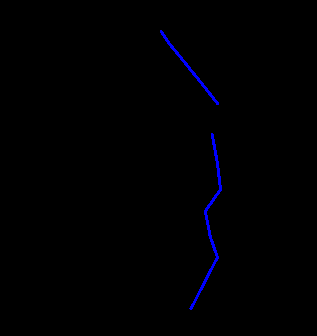Hi. Today's second question, I'm glad that this forum exists :) I'm sending the "example" file in the attachment. I would need advice on a transformer where I could implement a sequence of individual segments. I have an idea, but I don't know how to implement it in WS. StartPoint and EndPOint is one segment. I need to determine the correct order of the segments. To get the correct order, I need to determine the first and last point - the value of the first point must meet the condition of occurrence in "startpoint" and at the same time it must occur only once ( A1 ). If I manage to determine the first segment, I need to further apply that the endpoint value of the first segment ( A2 ) is the starting value ( startpoint ) of the following segment. This way the correct sequence will be connected. Some ideas?








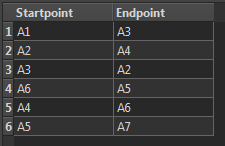 to this
to this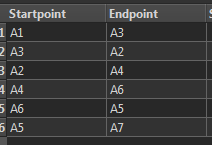 Where each end point is the start point of the subsequent feature, the attached workspace should do this
Where each end point is the start point of the subsequent feature, the attached workspace should do this

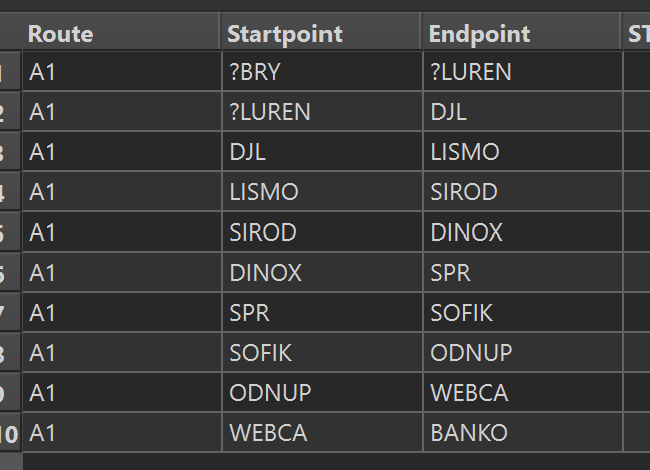
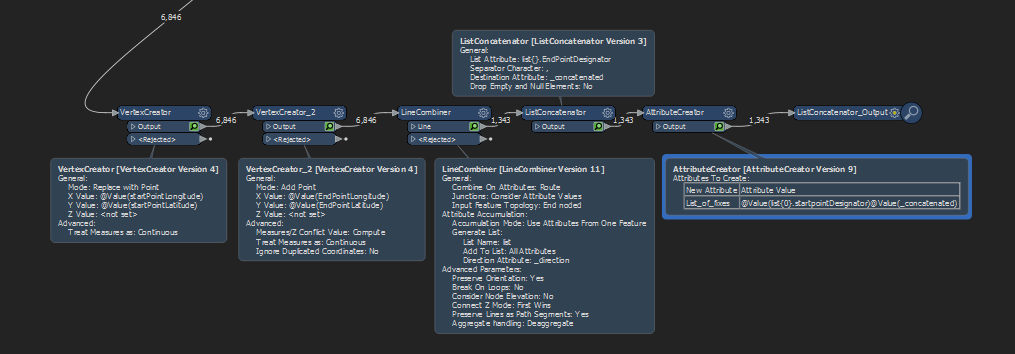 Although it does look like you have some duff data in there, e.g. A6 appears to be missing a segment
Although it does look like you have some duff data in there, e.g. A6 appears to be missing a segment